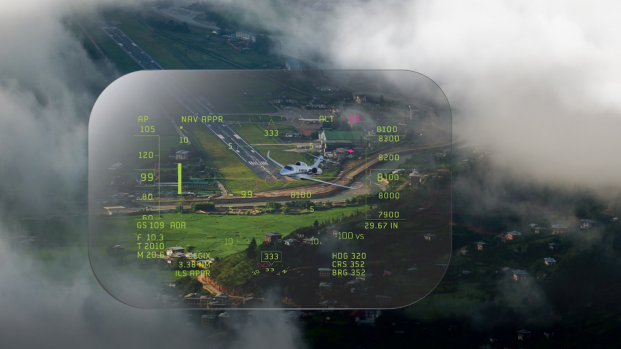History: FAA Approves First Small-Plane HUD. How It Happened And What It Means.
The approval, the first of its kind in a small plane, is the first of many planned STCs for SkyDisplay.

FAA Approves First Small-Plane HUD
MyGoFlight subsidiary SkyDisplay announced that it has earned FAA STC approval for its SkyDisplay HUD (head-up display) in the Cirrus SR22, the first such approval for a HUD in a light plane. It's a huge deal.
I've had the chance to fly behind HUDs on about a dozen different large business aircraft or commercial jets. I've also had the chance to speak at length with people who have created HUDs, delving into the technical challenges behind developing and fielding them. Before I go into detail, let me just say, there is nothing simple or easy about creating a HUD, and the folks at SkyDisplay have pulled off something really big.
A HUD is, of course, a way to create and/or enhance a view of the outside world by projecting an image on a transparent window sitting right in front of the pilot's eyes. The supplemental data displayed on the glass is the HUD's reason for being. It shows a wealth of information, like runway location and flight path and velocity vector, all features we've come to know and love on flat panel flight displays. But the HUD places all of that information right in front of the pilot's eyes, and not on a screen below the pilot's natural sight line, where the real world lies. The value is in allowing pilots to focus all of their attention on the outside world.
A true HUD, and this one is, has a few features that set it apart. They are conformal. That is, what the head-up display shows you matches what's actually out there in the real world. If it displays the runway end, well, that runway end had better be exactly where the HUD says it is. The pilot has to do nothing but fly. The data on the glass is focused at infinity, so it seems to just float upon the glass, so the pilot doesn't have to focus and then refocus over and over to see the outside world and then the HUD data and back again. Instead, the data is just there, in focus as the pilot peers out at the world.
Some HUDs have enhanced vision capabilities, and this one from SkyDisplay can optionally have that as well, via the addition of an Astronics Max-Viz enhanced vision sensor that cuts through some smoke and fog to see the runway behind the obscuration.
Head-up displays in large jets do something the SkyDisplay HUD doesn't. They allow reduced minimums on approach while hand flying. Most also have reduced minumums for takeoffs. The SkyDisplay HUD is advisory. You get no credit for it, so the minimums remain the same.
At the same time, HUDs help you fly better by allowing the pilot to focus on the approach (or go around, too) instead of moving their gaze back and forth from the instruments to the outside world. That is an absolutely huge advantage.
And SkyDisplay is hoping that word spreads about that fact. It doesn't hurt that the cost of the unit is less than $30,000 (without installation), making it a tenth of what commercial HUDs cost while delivering about 90% of the benefit.

Subscribe to Our Newsletter
Get the latest Plane & Pilot Magazine stories delivered directly to your inbox






